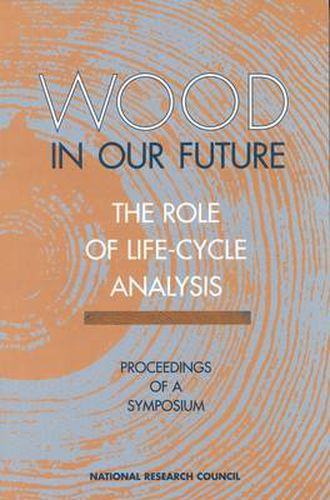Readings Newsletter
Become a Readings Member to make your shopping experience even easier.
Sign in or sign up for free!
You’re not far away from qualifying for FREE standard shipping within Australia
You’ve qualified for FREE standard shipping within Australia
The cart is loading…






The United States produces 25 per cent of the world’s wood output, and wood supports a major segment of the U.S. industrial base. Trees provide fiber, resins, oils, pulp, food, paper, pharmaceuticals, fuel, many products used in home construction, and numerous other products. The use of wood as a raw material must consider production efficiencies and natural resource conservation as well as efficient, profitable use of solid wood, its residues, and by-products. To better assess the use of wood as a raw material, the U.S. Department of Agriculture’s Forest Service asked the National Research Council’s Board on Agriculture to bring together experts to review the analytical techniques used to follow the life-cycle of wood production - from tree to product - and assess the environmental impacts. This resulting book provides a base of current knowledge, identifying what data are lacking, where future efforts should be focused, and what is known about the methodologies used to assess environmental impacts. The book also focuses on national and international efforts to develop integrated environmental, economic, and energy accounting methodologies.
$9.00 standard shipping within Australia
FREE standard shipping within Australia for orders over $100.00
Express & International shipping calculated at checkout
The United States produces 25 per cent of the world’s wood output, and wood supports a major segment of the U.S. industrial base. Trees provide fiber, resins, oils, pulp, food, paper, pharmaceuticals, fuel, many products used in home construction, and numerous other products. The use of wood as a raw material must consider production efficiencies and natural resource conservation as well as efficient, profitable use of solid wood, its residues, and by-products. To better assess the use of wood as a raw material, the U.S. Department of Agriculture’s Forest Service asked the National Research Council’s Board on Agriculture to bring together experts to review the analytical techniques used to follow the life-cycle of wood production - from tree to product - and assess the environmental impacts. This resulting book provides a base of current knowledge, identifying what data are lacking, where future efforts should be focused, and what is known about the methodologies used to assess environmental impacts. The book also focuses on national and international efforts to develop integrated environmental, economic, and energy accounting methodologies.